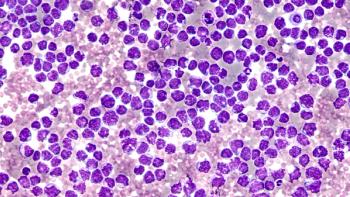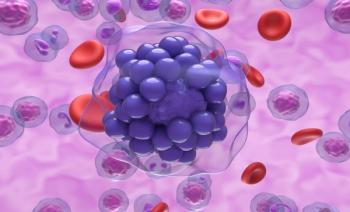
Rilzabrutinib Reduces Itch and Hives in Antihistamine-Resistant Chronic Spontaneous Urticaria
Key Takeaways
- Rilzabrutinib significantly alleviates itch and hives in patients with CSU unresponsive to H1-antihistamines, offering a potential new treatment option.
- The RILECSU trial demonstrated significant improvements in CSU symptoms with 1200 mg/d rilzabrutinib, meeting primary and secondary endpoints.
Patients with moderate to severe chronic spontaneous urticaria that were antihistamine-resistant to omalizumab experienced improvements with rilzabrutinib.
Rilzabrutinib demonstrated significant efficacy and a rapid onset of action in alleviating itch and hives in patients with moderate to severe chronic spontaneous urticaria (CSU) whose condition did not adequately respond to H1-antihistamines, suggesting a promising new treatment option for patients who continue to experience debilitating symptoms, according to a study published in
Patients with CSU experience significant disease burdens, including sleep impairment, decreased physical and emotional well-being, and impaired performance at school and work. Researchers do not fully understand the pathogenesis of CSU, but they estimate the
First-line treatment for patients is typically H1-antihistamines, but only a minimal number of patients achieve complete disease control.3 Patients who are nonresponders to both first- and second-line treatment are typically those with autoimmune CSU, who make up about 8% and up to 69% of all patients with the condition.
Researchers are developing Bruton tyrosine kinase inhibitors (BTKIs) with higher selectivity and fewer adverse events, including rilzabrutinib, an oral, reversible, covalent BTKI with high target specificity that acts on multiple pathways in both innate and adaptive immune cells.1 Researchers conducted the rilzabrutinib Efficacy and Safety in CSU (RILECSU; NCT05107115) randomized clinical trial, which comprised a 12-week, double-blind, placebo-controlled, dose-ranging period, followed by a 40-week open-label extension for a 52-week phase 2 study.
There were 160 patients enrolled in the study, with 143 omalizumab-naïve and 17 omalizumab incomplete responders. Patients were randomized to either 400 mg per day of rilzabrutinib (23.8%), 800 mg per day (25.6%), 1200 mg per day (25.6%), or matching placebo (25%). The overall cohort had a mean age of 44.1 years, and 70% were female.
The study met the primary end points, demonstrating improvements in the main disease components of CSU. The 1200 mg per day rilzabrutinib achieved significant improvements in itch and hives compared with placebo, and researchers measured itch by the change from baseline in Itch Severity Score (ISS7) at week 12 (least squares [LS] mean, –9.21 vs –5.77; difference, –3.44; 95% CI, –6.25 to –0.62; P = .02). Researchers measured the composite score for itch and hives by the change from baseline in Urticaria Activity Score (UAS7) at week 12 (LS mean, –16.89; difference, –6.75; 95% CI, –12.23 to –1.26; P = .02).
The study met secondary end points, and the 1200 mg per day rilzabrutinib dose achieved improved hives severity, which researchers measured by Hives Severity Score at week 12 compared with placebo (LS mean difference, –3.24; 95% CI, –6.08 to –0.39). The clinically meaningful change in UAS7 from baseline observed at week 4 compared with placebo demonstrated rapid improvement in itch and hives (LS mean difference, –6.60; 95% CI, –11.22 to –1.97).
Additionally, a higher proportion of patients treated with 1200 mg per day of rilzabrutinib achieved well-controlled disease (UAS7 ≤ 6) compared with placebo at week 12 (12 patients, 34.3% vs 4 patients, 11.1%). Rilzabrutinib (1200 mg per day) effectively reduced ISS7 and UAS7 from baseline at week 12 vs placebo regardless of baseline and disease characteristics.
Rilzabrutinib (1200 mg per day) reduced CSU-related biomarkers like median soluble Mas-related G protein-coupled receptor X2, IL-31 levels, immunoglobulin (Ig)-G antithyroid peroxidase, and IgG anti-Fc-ε receptor 1 over 12 weeks from baseline compared with the placebo.
Rilzabrutinib caused diarrhea and nausea as the most frequent treatment-emergent adverse events, with most reports indicating mild severity and none indicating severe severity. The researchers reported no deaths, and none of the patients experienced events of cytopenia, bleeding, or atrial fibrillation. The small sample size limited racial diversity among the study population, the low number of omalizumab incomplete responders, and the short duration limited the overall results.
“Further research is needed to determine long-term efficacy and potential harms,” study authors concluded.
References
1. Giménez-Arnau A, Ferrucci S, Ben-Shoshan M, et al. Rilzabrutinib in antihistamine-refractory chronic spontaneous urticaria: the RILECSU phase 2 randomized clinical trial. JAMA Dermatol. Published online April 23, 2025: e250733. doi:10.1001/jamadermatol.2025.0733
2. Armstrong AW, Soong W, and Bernstein JA. Chronic spontaneous urticaria: how to measure it and the need to define treatment success. Dermatol Ther (Heidelb). 2023;13:1629-1646. doi:10.1007/s13555-023-00955-7
3. Santoro C. Complete response seen with emerging therapies for chronic spontaneous urticaria. The American Journal of Managed Care®. April 16, 2025. Accessed May 5, 2025.
Newsletter
Stay ahead of policy, cost, and value—subscribe to AJMC for expert insights at the intersection of clinical care and health economics.













































